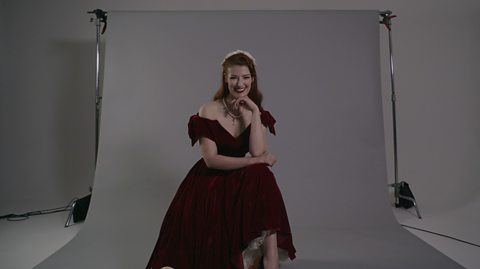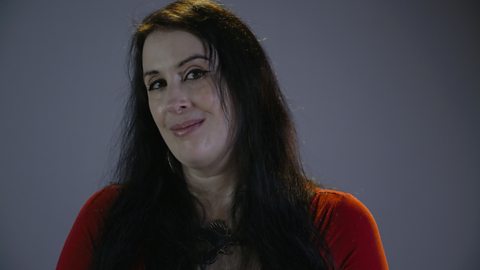, the 91»»±¨‚Äôs journalism and media project encouraging young people aged 11-18 to share their stories, asked some award-winning storytellers to share the secrets of their craft. If you‚Äôre thinking about how best to tell your story, then we‚Äôve got some great tips to help you bring it to life.

Tip 1: Write about what you know and care about
Often, the best starting points for stories are your own experiences and the things you’re passionate about.
Award-winning YouTuber Jessica Kellgren-Fozard found that her stories gained more attention when she started writing openly about her own experiences.
“To start with, I very vaguely touched on disability issues and I got one comment that said that I was a disgrace to the disabled community. They said how dare I stand up and say I’m disabled when I don’t look like I am. I took from that that I should start being more open and that I should talk about myself and my own experiences. Then I made a video for International Week of the Deaf. The video went from just a few thousand views to two million almost overnight and it was wonderful.”
A good story is a story that is authentic, honest and truthful. - Mim Shaikh
“I think documentary storytelling is probably the most authentic and most honest form of storytelling," says Mim Shaikh, whose documentary about his search for his birth father has been watched by millions. "Nothing’s being acted, nothing’s being masked, nothing’s being written – it’s literally pick up the camera, go, let’s see what happens. If I felt angry, I would show that I was angry. If I felt vulnerable, I would show that I was vulnerable.”
Many storytellers mine their own lives for inspiration for their stories.
Stand-up comedian Suzi Ruffell says: “There’s never any time when I go: 'Well, I wouldn’t talk about that on stage.’ The terrible thing about being a stand up is often when something terrible happens you think: 'Oh God, that’s awful. I’ll probably get a routine out of that!'"
Ã˝


Tip 2: Be inspired by other storytellers
If you want to be a writer but don’t know where to start, why not draw your first inspiration from other writers?
“I spent a lot of time online watching videos and looking at things that other people were posting and I realised that actually this was something that I could do myself,” Jessica says.
“So I started writing my own stories and posting them online, and other people really loved reading them and that gave me such a confidence boost.”
And as the saying goes, practice makes perfect. Rhianna Pratchett is a storyteller for video games. She says: “A writer writes, so you need to keep honing your craft. Read, be a sponge for stories, be interested in the world and people, and just nourish yourself as a writer above anything else.”
Ã˝

Tip 3: Take a risk from time to time
Jessica describes her style as a ‘little bit cheeky and sassy’ and she tries to get her point across in ‘a fun but educational way’.
“[…] I don’t think being directly antagonistic is the best way to get your message across. Instead, I do what’s called ‘soft activism’ where I’m like ‘Look! Isn’t this thing wonderful? Don’t you agree with it? Of course you agree with it! It’s common sense isn’t it?’ And how can you disagree with that?"
Suzi, who’s had her fair share of gigs that have bombed, thinks failure can be your friend.
“Comedy’s the only way to tell stories and it’s a great thing to be able to laugh at something. Even when things are bad, to be able to find humour in it is a really positive thing.”
“If you don’t get a laugh it’s sort of fine. People imagine it’s much, much worse than it is but … that’s what you have to do as a standup – you fail loads and that’s how you learn how to get funny.”
Ã˝

Tip 4: Learn to structure your story
“I would say what it takes to make a documentary is having a great story, but a great story for YOU, and figuring out that beginning, that middle and that end," Mim says.
"What is the question you have at the beginning that you want answered towards the end?”
The starting point of Mim’s documentary were the questions he had about the father he’d never met. Throughout the story, he brought us on a journey towards the resolution of some of those questions.
Ã˝
Tip 5: Use your imagination to add colour and detail
If you’re creating a narrative and not doing a factual report, a bit of imagination can really help to draw the audience in.
Suzi says: “There’s the story – so that’s like the linear thing that’s going across the story, that’s the true bit – and then you’ll have moments in between where I might do an impression of a guy that I’m talking to in a shop, then I might do my reaction to him, and then I might do my mum’s reaction to him, and then I might do something that didn’t really happen but it’d be funny if it did… but the audience don’t need to know that!”
I like looking at the human details - Rhianna Pratchett
Rhianna also adds little details that are not essential to the narrative structure of a story but flesh out a character and bring them to life.
“With someone like Lara Croft I like to look at the things that aren’t so commonly explored – her friendships, things like what’s her favourite biscuit (Jaffa cake is the answer to that!),” she says. “I like looking at the human details and finding that really interesting storytelling meat between the hero and the human.”
